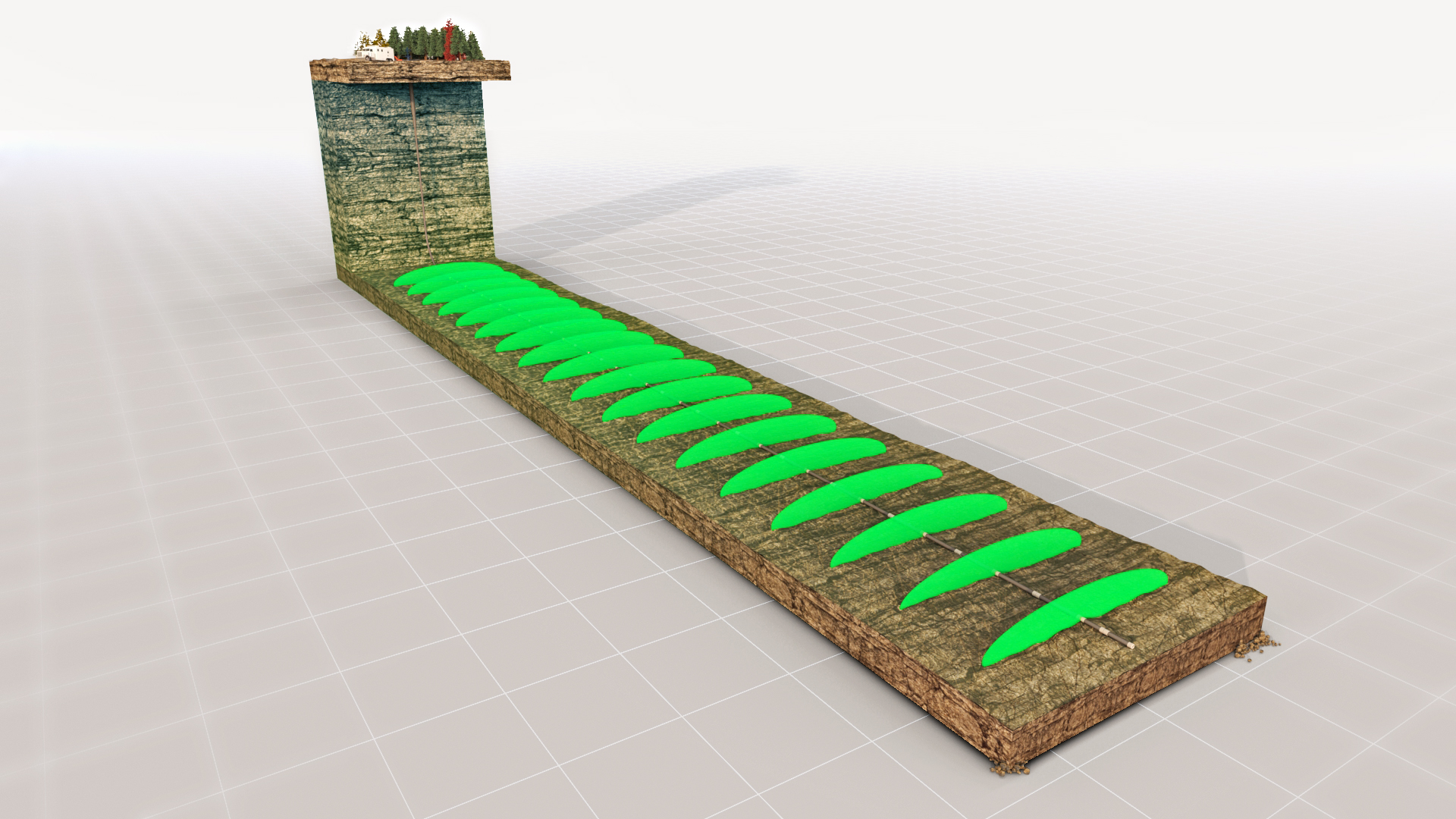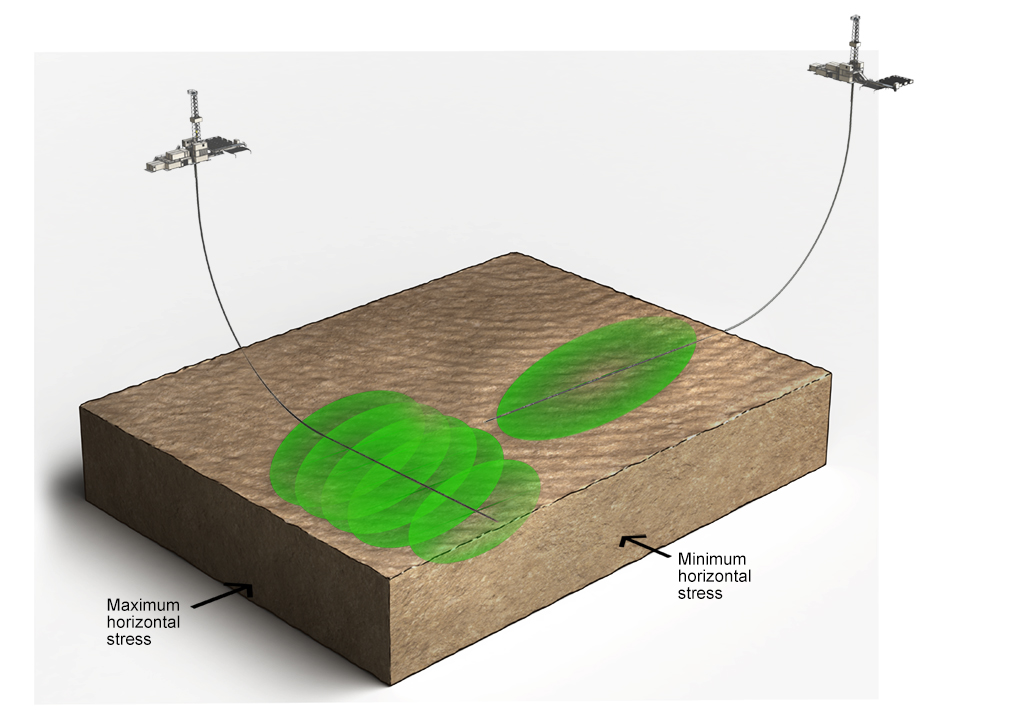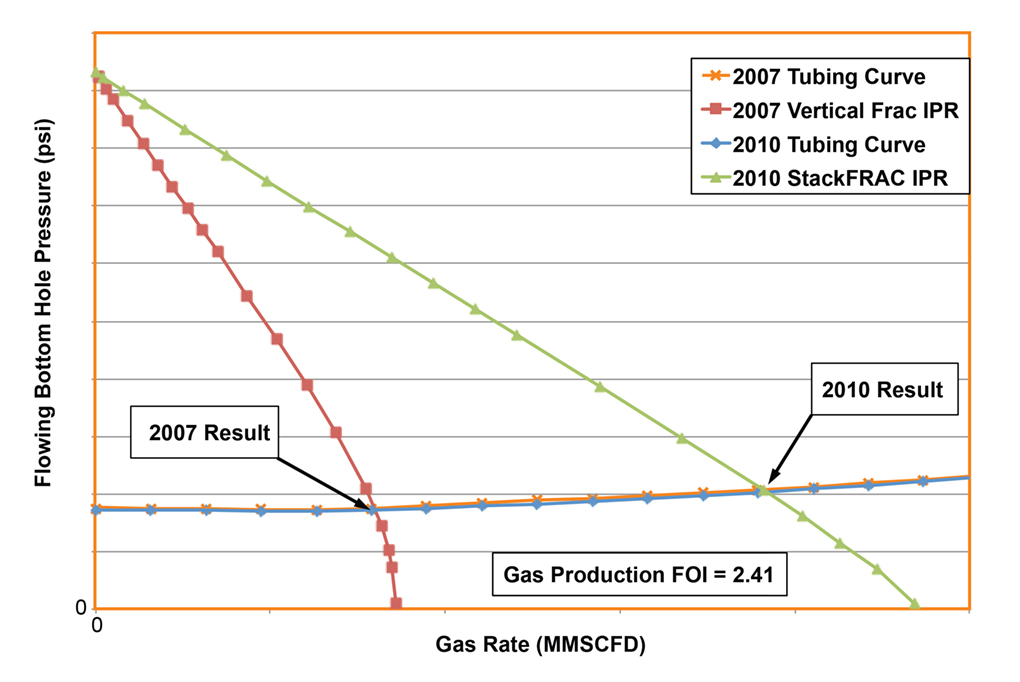StackFRAC system improves production from a deep sandstone reservoir

Background
The pre-Khuff Unayzah gas reservoir in Saudi Arabia consists of sandstone units Unayzah-A and -B/C separated by variable-thickness siltstone units and shale barriers. Significant natural gas reserves are available for exploitation from these formations, but their highly abrasive nature and low permeability makes wells difficult to drill and produce triggering optimization of drilling and completion techniques.
Initial horizontal wells were drilled perpendicular to the direction of maximum horizontal in-situ stress and experienced borehole stability issues resulting in bit sticking and stuck pipe. To mitigate these issues and optimize drilling efficiencies, the Operator switched to drilling parallel to the direction of maximum stress. This improved the rate of penetration (ROP), decreased bit sticking, stuck pipe and borehole breakout issues, and minimized tool breakdown.
Challenge
The original horizontal and multi-lateral wells in the area showed noticeable production improvement compared to vertical wells; however, stabilized gas production rates remained sub-optimal. Even with the increased contact area, the low porosity and permeability did not allow sufficient production to be commercially viable.
Initial attempts with proppant fracturing were unsuccessful in this formation and often resulted in screen out and poor production. A better method of completion and stimulation was necessary to achieve forecasted production values. Open hole, multi-stage stimulation was considered as a method of unlocking the potential of this reservoir. However, this would require a change in drilling methodology.
By drilling in the direction of maximum horizontal stress, fractures are likely to propagate longitudinally along the lateral section, which limits post-stimulation reservoir contact and allows for potential communication between stages (Figure 1). Therefore, in order to maximize the effectiveness of the multi-stage fracture treatment, drilling in the direction of minimum stress was necessary to produce transverse fractures.
Solution

A vertical well in the Unayzah-A was selected for a workover. This well was originally stimulated with a single proppant fracture treatment. The Operator chose to re-complete this well as a horizontal well. After killing and sidetracking the original well, a 2,356 ft lateral was drilled in the direction of minimum in-situ stress through the target Unayzah- A reservoir to 18,080 ft total depth (TD). As expected, the change in drilling direction resulted in bit sticking and a significant drop in ROP due to the formation hardness and abrasiveness. From the difficulty seen in drilling, the Operator was aware that stimulating the well would be a challenge.
A Packers Plus StackFRAC® system was designed to section the well into four compartments. Best practices were used for installation of the system, including pre-installation reamer runs to eliminate “tight spots” and avoid mechanical sticking. To address the potential for differential sticking, a combination of purpose-built swivel fluted centralizers with enlarged fluid flow-by areas and slip-on centralizers ensured positive standoff along the entire lateral. Precautions were also taken to minimize stationary time during lower completion deployment.
Results

Because this was the first proppant treatment in the field using the StackFRAC system, it was not known how readily the formation would take the proppant. Previous proppant fractures in the field using cemented liners with perforations often resulted in screen out and poor production. With a well-defined contingency plan in place to address a potential screen out, the first stage treatment was designed conservatively in terms of volume, size and loading. Depending on the results, each subsequent treatment was designed to be more aggressive.
All of the ports sheared open at the programmed pressures and 100% of each proppant treatment was placed successfully with an average pump rate of ~30 bbl/min at an average pumping pressure of ~11,000 psi. Comingled flowback of the well showed that the 4-stage Packers Plus open hole StackFRAC completion increased stabilized gas production to 2.4 times the initial vertical well (Figure 2).
